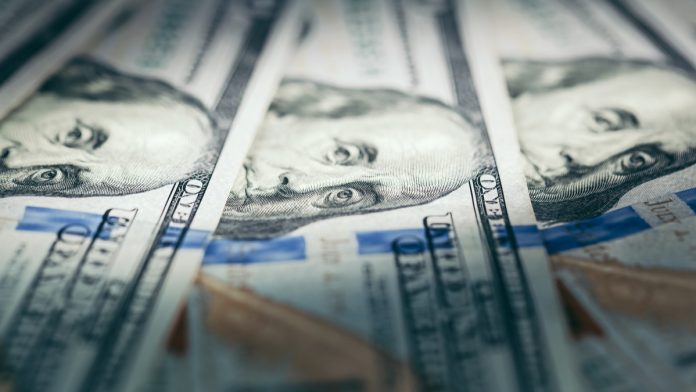The pound US dollar exchange rate moved higher on Monday. However, this was more of a dollar weakness story than due to any particular pound strength. The pound US dollar exchange rate rallied to a high of US$1.2674, its highest level in a week.
| What do these figures mean? |
|---|
| When measuring the value of a pair of currencies, one set equals 1 unit and the other shows the current equivalent. As the market moves, the amount will vary from minute to minute.For example, it could be written:1 GBP = 1.28934 USDHere, £1 is equivalent to approximately $1.29. This specifically measures the pound’s worth against the dollar. If the US dollar amount increases in this pairing, it’s positive for the pound. Or, if you were looking at it the other way around:1 USD = 0.77786 GBPIn this example, $1 is equivalent to approximately £0.78. This measures the US dollar’s worth versus the British pound. If the sterling number gets larger, it’s good news for the dollar. |
The pound was broadly out of favour in the previous session as concerns over the health of the UK economy amid Brexit uncertainty returned to haunt investors. Data showing that the UK manufacturing sector unexpectedly fell into contraction unnerved pound investors. The manufacturing pmi dipped to 49.4, well below the 52.5 that analysts had forecast and down from 53 in April. 50 is the key level that separates expansion from contraction. This was the biggest downturn for the sector in three years as stockpiling for Brexit came to an abrupt halt.
The weak manufacturing data comes as manufacturer’s become increasingly more vocal over the economic lunacy of leaving the European Union without a deal in place. The most recent manufacturing figures are evidence of the impact that scarce investment have on the sector in the case of a no deal Brexit. The warnings from manufacturers come as multiple candidates lining up to take over from UK Prime Minister Theresa May have sad that they will take the UK out of the EU on 31st October, with or without a deal. Fears of an increased chance of a no deal Brexit could hit demand for the pound for some time still.
Dollar Drops As US Data Points To Fed Rate Cut
Demand for the dollar fell sharply on Monday as investors fretted over a rate cut from the Federal Reserve. Concerns are growing that the escalating US — Sino trade dispute is tipping the global economy into a downturn. US manufacturing data on Monday showed that the sector unexpectedly fell into contraction, hitting its weakest pace in a decade.
With the US economy showing signs of strain, investors are assuming that the Federal Reserve are more likely to cut interest rates between ow and the end of the year rather than raise them. This expectation pulled the dollar lower.
| Why do raised interest rates boost a currency’s value? |
|---|
| Interest rates are key to understanding exchange rate movements. Those who have large sums of money to invest want the highest return on their investments. Higher interest rate environments tend to offer higher yields. So, if the interest rate or at least the interest rate expectation of a country is relatively higher compared to another, then it attracts more foreign capital investment. Large corporations and investors need local currency to invest. More local currency used then boosts the demand of that currency, pushing the value higher. |
US durable goods orders and factory orders will be more under the spotlight than usual, as will Fed Chair Jerome Powell when he appears to discuss policy strategy at the Chicago Fed conference.
This publication is provided for general information purposes only and is not intended to cover every aspect of the topics with which it deals. It is not intended to amount to advice on which you should rely. You must obtain professional or specialist advice before taking, or refraining from, any action on the basis of the content in this publication. The information in this publication does not constitute legal, tax or other professional advice from TransferWise Inc., Currency Live or its affiliates. Prior results do not guarantee a similar outcome. We make no representations, warranties or guarantees, whether express or implied, that the content in the publication is accurate, complete or up to date. Consult our risk warning page for more details.
This article was initially published on TransferWise.com from the same author. The content at Currency Live is the sole opinion of the authors and in no way reflects the views of TransferWise Inc.





